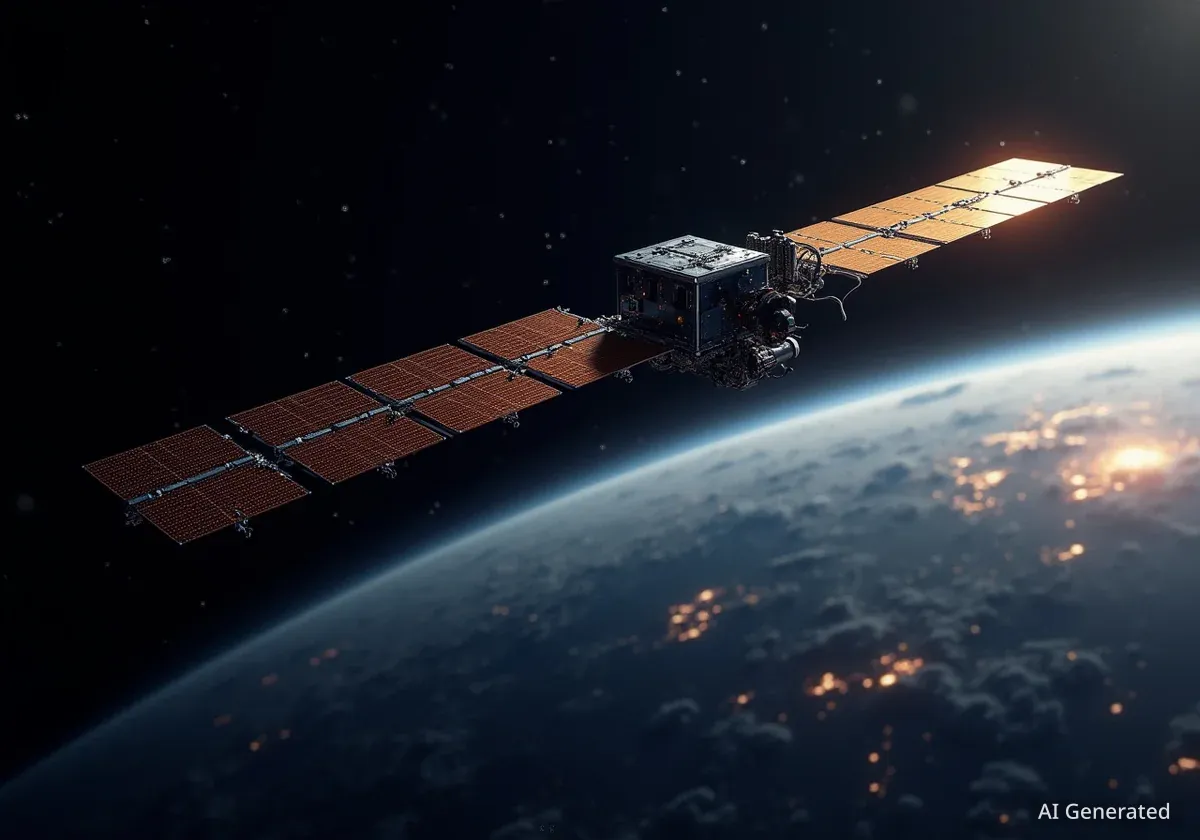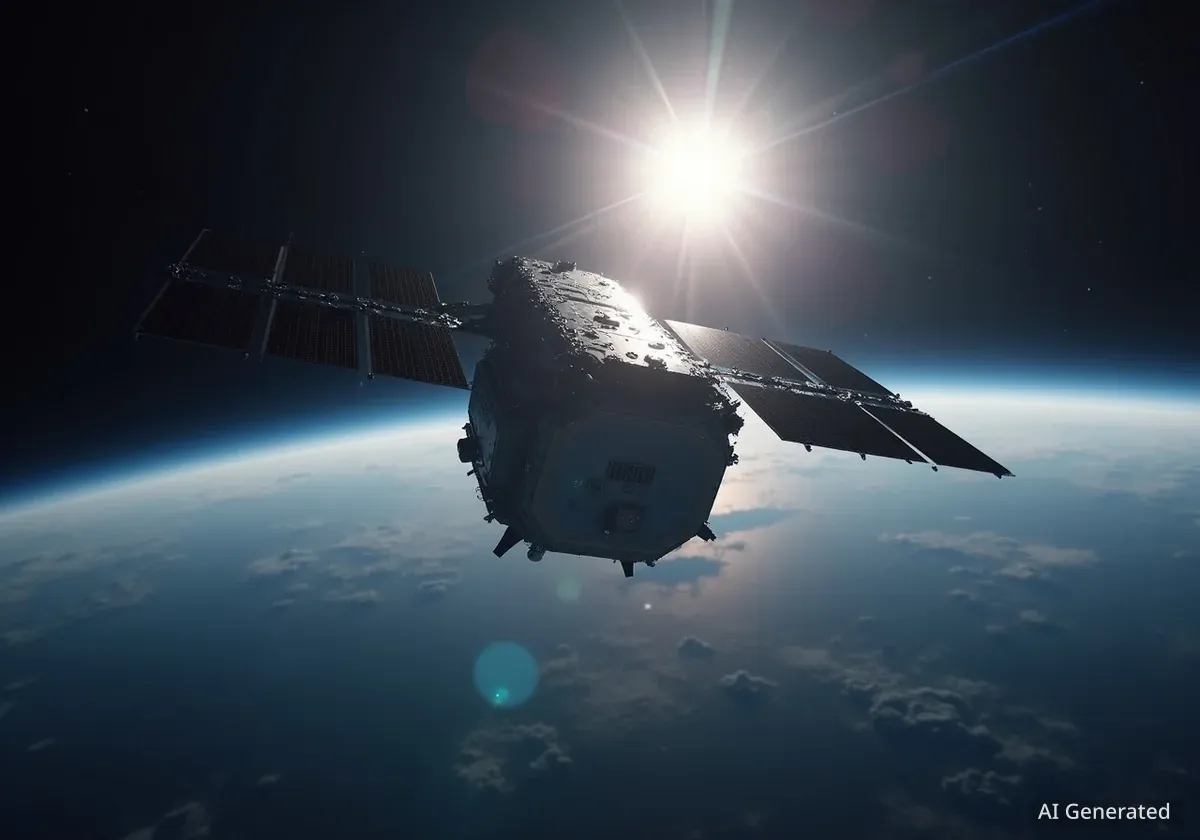The White House has initiated one of the most ambitious and controversial defense projects in modern history, a space-based missile shield dubbed "Golden Dome." President Donald Trump has publicly stated the system will be completed by the end of his term for $175 billion, but defense analysts project the cost could exceed a trillion dollars over the next decade.
The initiative aims to create a comprehensive defense against long-range missile attacks, a capability the United States currently lacks against major powers like Russia and China. However, the plan is facing intense scrutiny over its feasibility, cost, and potential to trigger a new global arms race in space.
Key Takeaways
- The "Golden Dome" project aims to build a space-based missile defense system to protect the U.S. homeland.
- Official cost and timeline estimates ($175 billion in three years) are sharply contested by independent analysts, who predict costs of $1 trillion or more over a decade.
- The system revives concepts from the Reagan-era "Star Wars" initiative, using a large constellation of satellites to intercept missiles.
- Critics warn the project could destabilize global security, while proponents argue it is a necessary response to growing threats from China and Russia.
A New Era of Defense or a Dangerous Gamble?
The Golden Dome initiative represents a fundamental shift in U.S. defense strategy, moving away from the decades-old doctrine of mutually assured destruction. The goal is to build a shield that can neutralize incoming intercontinental ballistic missiles (ICBMs), particularly during their initial "boost phase" shortly after launch.
Proponents argue that the project is a long-overdue response to a significant vulnerability. "We’ve known these threats are coming," said Tom Karako, director of the Missile Defense Project at the Center for Strategic and International Studies, calling recent funding a "down payment to blot out the years of inattention."
However, the plan has drawn sharp criticism. Some lawmakers and security experts fear it will provoke adversaries and militarize space to an unprecedented degree.
"Golden Dome could be the single most dangerous idea Trump has ever proposed, and that’s saying something," commented Rep. Seth Moulton, a member of the House Armed Services Committee.
International response has been swift. A spokesperson for the Chinese Foreign Ministry warned that the system would "heighten the risk of turning space into a war zone" and urged the U.S. to abandon its development.
The Technology Behind the Shield
The core of Golden Dome involves placing thousands of interceptor satellites, or "kill vehicles," into low Earth orbit. This concept is not new; it was a central component of President Reagan's Strategic Defense Initiative (SDI), famously nicknamed "Star Wars."
From 'Star Wars' to Modern Reality
In the 1980s, the idea of a massive satellite constellation for missile defense was dismissed by many as science fiction. The technology and launch capabilities were simply not advanced enough. Today, the landscape has changed dramatically.
The cost of launching payloads into orbit has decreased significantly in the last decade, primarily due to innovations from commercial companies like SpaceX. This makes the deployment of large satellite networks more economically viable than ever before.
Companies have demonstrated the ability to operate mega-constellations, such as SpaceX's Starlink system, which currently has over 8,000 active satellites. "Physics hasn’t changed," noted Clayton Swope of the Center for Strategic and International Studies. "But what has are launch costs are so much lower and we’ve shown we can operate constellations of satellites in orbit."
This technological leap has revived the concept of space-based interceptors, which would swarm and collide with enemy missiles moments after they leave the launchpad.
Challenges and Costs of a Space-Based Defense
Despite technological advancements, the practical and financial hurdles for Golden Dome are immense. The official White House estimate of $175 billion is viewed with deep skepticism by budget analysts and defense experts.
An analysis by the Congressional Budget Office estimated that a limited system of space-based interceptors—capable of defending against only one or two missiles from a nation like North Korea—would cost $542 billion over 20 years. A more robust system designed to counter larger threats would be exponentially more expensive.
The Current U.S. System
Currently, the U.S. relies on the Ground-based Midcourse Defense (GMD) system. It consists of just 44 interceptors based in Alaska and California. This system is designed to hit missiles mid-flight, a feat often compared to "hitting a bullet with a bullet." Its test record is mixed, with a success rate of only 55% in highly scripted trials since 1999.
Todd Harrison, a senior fellow at the American Enterprise Institute, has calculated that a comprehensive defensive architecture for Golden Dome could cost as much as $3.6 trillion over two decades. "He bounded the initiative in such a way that it’s impossible to meet all those expectations," Harrison said of the President's claims. "They just don’t add up."
The Strategic Implications
The debate over Golden Dome extends beyond its price tag. The project's strategic impact is a central point of contention, with significant implications for global stability.
An Escalating Arms Race
U.S. intelligence agencies report that both China and Russia are significantly expanding their long-range weapon capabilities. A recent Defense Intelligence Agency report indicated China is on track to nearly double its ICBMs by 2035, while both nations are developing hypersonic weapons that can travel at over 4,000 mph and maneuver in flight, making them difficult to intercept.
Proponents of Golden Dome see it as a necessary deterrent. Gen. Chance Saltzman, the Space Force's chief of space operations, has been direct about the need for military readiness in this new domain. "If we want to use space effectively, we have to be ready to fight for it," he said in a recent interview.
Critics, however, argue that deploying a defensive shield will only accelerate this arms race. Adversaries may feel compelled to build more offensive weapons to overwhelm the system, leading to a less stable world. The sheer number of interceptors required is a major point of skepticism.
- The American Enterprise Institute estimates 950 interceptors would be needed in orbit to guarantee coverage against a single missile launch.
- To defend against an attack of 10 missiles, that number would jump to 9,500 interceptors.
- The American Physical Society puts the figure even higher, suggesting 16,000 interceptors would be needed to counter 10 ICBMs.
Even if such a network could be built, it could create a massive vulnerability. A single nuclear detonation in space could potentially disable thousands of satellites at once, rendering the entire multi-trillion-dollar system useless and creating a catastrophic field of orbital debris.
As defense contractors line up for what could be a generational spending program, the fundamental question remains. As former Pentagon official Doug Loverro puts it, "Everyone knows we’re not going to be able to intercept a mass strike. The question we have to entertain is how many missiles do we have to defend ourselves against in order to get the nuclear saber rattling to back down?"





